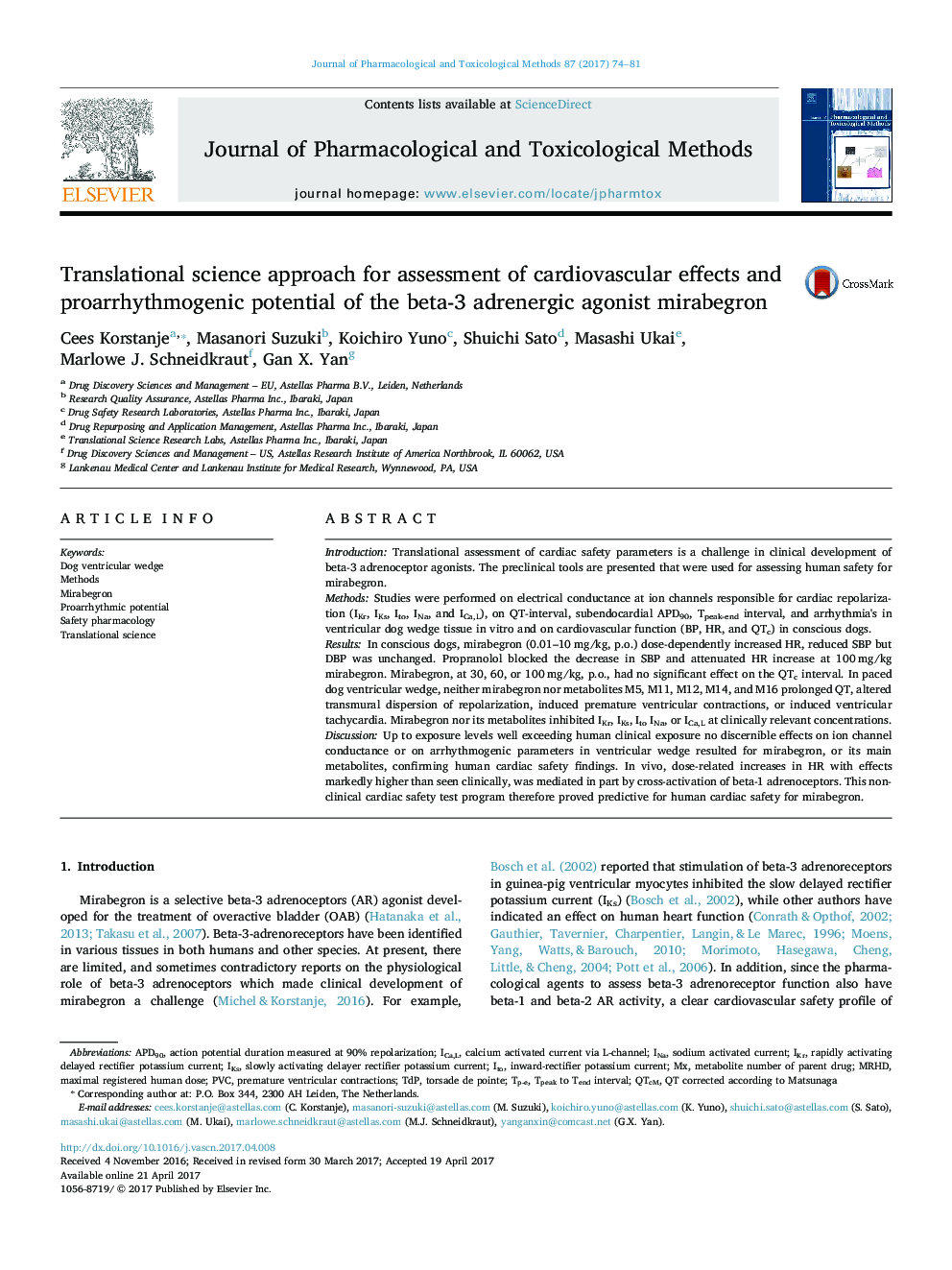| Article ID | Journal | Published Year | Pages | File Type |
|---|---|---|---|---|
| 5556511 | Journal of Pharmacological and Toxicological Methods | 2017 | 8 Pages |
IntroductionTranslational assessment of cardiac safety parameters is a challenge in clinical development of beta-3 adrenoceptor agonists. The preclinical tools are presented that were used for assessing human safety for mirabegron.MethodsStudies were performed on electrical conductance at ion channels responsible for cardiac repolarization (IKr, IKs, Ito, INa, and ICa,L), on QT-interval, subendocardial APD90, Tpeak-end interval, and arrhythmia's in ventricular dog wedge tissue in vitro and on cardiovascular function (BP, HR, and QTc) in conscious dogs.ResultsIn conscious dogs, mirabegron (0.01-10Â mg/kg, p.o.) dose-dependently increased HR, reduced SBP but DBP was unchanged. Propranolol blocked the decrease in SBP and attenuated HR increase at 100Â mg/kg mirabegron. Mirabegron, at 30, 60, or 100Â mg/kg, p.o., had no significant effect on the QTc interval. In paced dog ventricular wedge, neither mirabegron nor metabolites M5, M11, M12, M14, and M16 prolonged QT, altered transmural dispersion of repolarization, induced premature ventricular contractions, or induced ventricular tachycardia. Mirabegron nor its metabolites inhibited IKr, IKs, Ito INa, or ICa,L at clinically relevant concentrations.DiscussionUp to exposure levels well exceeding human clinical exposure no discernible effects on ion channel conductance or on arrhythmogenic parameters in ventricular wedge resulted for mirabegron, or its main metabolites, confirming human cardiac safety findings. In vivo, dose-related increases in HR with effects markedly higher than seen clinically, was mediated in part by cross-activation of beta-1 adrenoceptors. This non-clinical cardiac safety test program therefore proved predictive for human cardiac safety for mirabegron.
